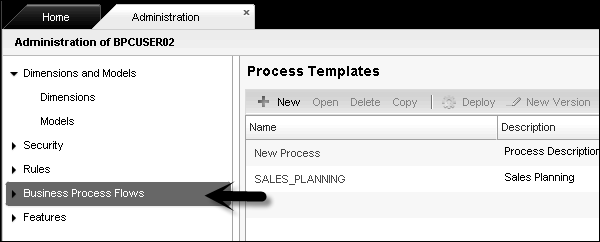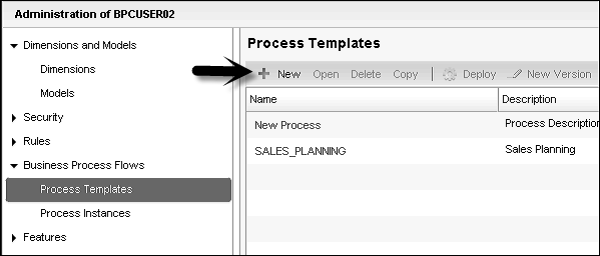Introduction to SAP BPC
SAP BPC stands for business planning and consolidation tool is designed to automate and streamline the consolidation activities, business forecast, and planning in the organizations. It also supports the organizations to maintain their business operations and financial activities. The SAP BPC tool integrates with all the SAP H/4 HANA functional modules that allow you to perform truly integrated sales, manpower management, and production activities
Want To Get SAP BPC Training From Experts? Enroll Now For Free Demo SAP BPC Online Training.
Architectural overview of SAP BPC
If you are a developer, then it’s mandatory to know the workflow of the SAP BPC. The SAP BPC architecture uses both versions (Microsoft Excel and Netweaver). They support various business rules and script logic for preparing the planning. The key components of the SAP BPC are shown in the below image;
Important factors about the SAP BPC architecture;
- For any BPC business-standard model, the SAP ERP environment recommends using the EPM plug-in.
- For the BPC embedded model, the SAP ERP environment recommends using the analysis plug-in due to its superior integration into the business warehouse metadata transactions.
- The EPM plug-in also has a few architectural limitations, so it will reduce the functional enhancement of the embedded model.
- Both the EPM and analysis plug-ins will be managed and developed as a part of the analysis office releases based on the SAP recommendations.
- SAP has invested in improving the BPC tool because of the Microsoft Excel capabilities it offers.
- According to the Gartner report, the BPC’s Microsoft Excel version is truly exceptional and the best on the market.
In addition to the BPC’s financial capabilities, it is also a robust analytical application development platform. It has developed in such a way that it is capable of solving a variety of business needs to reach customers’ expectations.
The BPC tool allows their customer to be nimble and dynamic while designing their business planning and expanding their application development to grow or make any changes as per the customer needs.
SAP BPC migration versions
The SAP BPC supports two types of migration versions, they are;
- SAP Netweaver
- Microsoft Excel
Let me explain them briefly;
The Microsoft excel version supports modeling, data importing, application maintenance, adding transformations and creating scripts. It combines the power of Microsoft Excel that offers users EPM (Enterprise power management) solutions, in the application development process, it acts as a collaborative tool with robust and readily accepted environments.
The SAP Netweaver version supports the RESTFul connection to the ABAP and supports regular access to the user interfaces. It always supports client-side logging functional capabilities.
Salient features of SAP BPC:
After knowing the benefits of this tool, you might be thinking to adopt it in your organization. For that, it’s important to know the key features. In this section, we are going to describe a few key features,
- Proven stable platform, but rigid financial planning and partially integrated.
- A flexible tool that provides a standalone planning solution with data replication.
- Powerful SAP H/4 HANA in-memory accelerations.
- Offers real-time data access- limited or no replication of data.
- SAP BPC is also known for its universal journal as the foundation.
- Shared master and transactional data across the ERP environment applications.
- Single and integrated environment.
Why do we need SAP BPC in the organization?
Here we are going to list the major benefits of using SAP BPC in organizations.
Here we are going to list the major benefits of using SAP BPC in organizations.
- The SAP BPC is a component of the SAP EPM (enterprise planning management). It’s an application dedicated to financial processes on a binding platform.
- Accept by the business and designed for the backend user, it is the target environment to support planning and financial reporting.
- SAP BPC can be initially implemented to address one business process such as management consolidation but quickly be extended to address other processes such as business modeling, planning, and budgeting.
- This organic scalability is a distinct differentiator of SAP BPC’s unified platform.
- Diminish effort to produce information and reduced cycle times for budgeting/ forecasting, and consolidations.

SAP BPC Training
- Master Your Craft
- Lifetime LMS & Faculty Access
- 24/7 online expert support
- Real-world & Project Based Learning
SAP BPC application types
An application in BPC is defined as a multidimensional data model used in the EPM system. A few examples for applications are operations, legal, and finance teams.
There are two types of BPC applications, they are;
- Reporting applications
- Non-reporting applications
Reporting applications are used for analytical purpose and also enables you to pass the input data from the users. Whereas Non-reporting applications are used to define the reference data such as currency rates and carry forward balance etc.
An APPset consists of one or more applications in the organization. Each application incorporates the master data for an application that also controls the data flow in the system.
Below are the important parameters used in the applications;
- ALLOW_FILE_SIZE
- UPLOADTEMP
- TEMPLATE VERSION
- REPORT ZOOM
- LOG LEVEL
- SYSTEM
SAP BPC functional terminologies used
If you are a BPC consultant, then it is mandatory to have terminology knowledge. Below are the few SAP BPC terminologies:
- Environment: it is a starting point for creating any model or application. Before it was called an Application set or AppSets.
- Dimensions: The user can define the dimensions as secure. You need to grant read and write access to the users who use the models so they access the data.
- Properties: this terminology provides additional information to define the dimensions.
- Dimension members: Each dimension member consists of shows master, texts, and hierarchy data associated with the key dimensions.
- Model: To meet the business planning and consolidation requirements, a model is needed. So you need to build a model, that should define the collection of dimensions.
- Data manager package: The data manager packages help to execute the various BPC tasks.
- Business rules: business rules are an essential part to manage business operations in different countries. The SAP BPC consists of rule-based tables to meet the business and consolidation requirements. In a few cases, when rule-based tables are failed to meet the business and consolidation requirements by the time a logic script can be used to achieve the business requirements.
Here we would like to mention important business rules;
- Currency translations.
- Balance carry forward
- Intercompany eliminations.
- Data validations.
- Logic scripts: the logic scripts are defined as a set of SQL and MDX programming structures to perform a few customized operations like flexibility and managing data models.
- User: A user is defined as an individual who uses the app set in their organization.
- Team: the team is nothing but a group of users based on the roles.
- Task: all the activities that are performed in the BPC system are known as tasks.
Related Article: SAP BPC Architecture

Subscribe to our YouTube channel to get new updates..!
SAP BPC- Process flow management
SAP BPC process flow management is used to manage the user-created processes which are maintained through process templates. To manage any process flow, you maintain the process task profile.
The process templates are defined as a business process that consists of all the important tasks that are spread across multiple SAP BPC modules. The tasks it includes are;
- Step-by-step process flow
- User performed activities link
- Process context
- Timing of the process flow
Guide to create process flow:
Here we are going to explain a step-by-step guide to create the process flow;
- To create a new process flow template, login to the web portal -> then select the options planning and consolidation administration.
- Then on the left side of the window, you can see the option of business process flow as shown below;

- Expand the tab ->then you will see process templates ->process instances.
- To create a new business process template ->go to the tab process template -> then click on the “ new” button as shown below:

BPC admins take the responsibility of creating and managing the process templates. Now you are all set to use the business process using process flow templates.
Important functionalities which you need to be remembered:
- Work status: it is a part of the physical data load.
- Security: you can modify the security settings by changing the system data (either all or locked).
- Data update: this shows how the already stored data will be updated by the customers.
- Push: this option is to push the work for all the mother and child nodes.
Final take:
The main aim to design the SAP BPC post is to help our ERP audience who are all looking to master themselves in their respective field. The SAP BPC is one of the popular business tools and helps every organization to maintain their business operations and financial planning. You will get the SAP BPC either in Netweaver or Microsoft Excel versions, choose the version as per your business demands. The article on SAP BPC tutorial helps SAP business professionals to hold a core knowledge of the tool. We hope this blog has helped you for learning about SAP BPC.
About Author
Kavya works for HKR Trainings institute as a technical writer with diverse experience in many kinds of technology-related content development. She holds a graduate education in the Computer science and Engineering stream. She has cultivated strong technical skills from reading tech blogs and also doing a lot of research related to content. She manages to write great content in many fields like Programming & Frameworks, Enterprise Integration, Web Development, SAP, and Business Process Management (BPM). Connect her on LinkedIn and Twitter.
Upcoming SAP BPC Training Online classes
| Batch starts on 26th Dec 2025 |
|
||
| Batch starts on 30th Dec 2025 |
|
||
| Batch starts on 3rd Jan 2026 |
|

